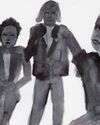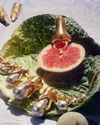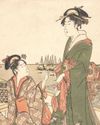With proper design, can an environment be hacked to raise the functioning levels of the autistic individual?

The stage is set up like a cube, with the top and front panels missing: three perfectly square walls, meeting at right angles, and a perfectly square floor. It isn’t perfectly cubic, however — the floor is tilted slightly higher at the far end, so that the audience seated in the stalls and arena can see that it, like the three walls, is printed with an identitical graph paper pattern and evenly dotted with LED light bulbs all over. To be precise, 892 bulbs.
In the middle of the stage floor, a life-like reproduction of a large Golden Retriever lies on its side, a garden fork speared through its middle. It is as graphic as it is realistic. Blood oozes from where it is impaled; the dog’s mouth is slack, its tongue lolling out.
This is the stark and unapologetic scene that greets the throng of theatre-goers as they fill the seats of the Esplanade Theatre to watch the much-anticipated staging of “The Curious Incident of the Dog in the Night-Time” by London’s National Theatre. No curtains, only the stage and a dead dog.
The requisite announcement that the play would be starting in five minutes comes over the speakers, but other than that, the audience is given no other commentary. Five minutes pass, and the theatre goers begin to grow restless.
Then, without warning, a jarring soundtrack crashes across the auditorium at a volume many decibels above what’s considered tolerably loud. The house lights go off and strobe lights far too bright to be comfortable for the eyes begin flashing on the stage.
I, like many of the audience members, find myself quickly clapping my hands over my ears and averting my gaze from the bright lights, and only finally relaxing into my seat when the volume tapers and the strobe lighting ceases, and the play begins proper.
この記事は T Singapore: The New York Times Style Magazine の May 2018 版に掲載されています。
7 日間の Magzter GOLD 無料トライアルを開始して、何千もの厳選されたプレミアム ストーリー、9,000 以上の雑誌や新聞にアクセスしてください。
すでに購読者です ? サインイン
この記事は T Singapore: The New York Times Style Magazine の May 2018 版に掲載されています。
7 日間の Magzter GOLD 無料トライアルを開始して、何千もの厳選されたプレミアム ストーリー、9,000 以上の雑誌や新聞にアクセスしてください。
すでに購読者です? サインイン

Look At Us
As public memorials face a public reckoning, there’s still too little thought paid to how women are represented — as bodies and as selves.

Two New Jewellery Collections Find Their Inspiration In The Human Anatomy
Two new jewellery collections find their inspiration in the human anatomy.

She For She
We speak to three women in Singapore who are trying to improve the lives of women — and all other gender identities — through their work.
Over The Rainbow
How the bright colours and lively prints created by illustrator Donald Robertson brought the latest Weekend Max Mara Flutterflies capsule collection to life.

What Is Love?
The artist Hank Willis Thomas discusses his partnership with the Japanese fashion label Sacai and the idea of fashion in the context of the art world.

The Luxury Hotel For New Mums
Singapore’s first luxury confinement facility, Kai Suites, aims to provide much more than plush beds and 24-hour infant care: It wants to help mothers with their mental and emotional wellbeing as well.

Who Gets To Eat?
As recent food movements have focused on buying local or organic, a deeper and different conversation is happening among America’s food activists: one that demands not just better meals for everyone but a dismantling of the structures that have failed to nourish us all along.

Reimagining The Future Of Fashion
What do women want from their clothes and accessories, and does luxury still have a place in this post-pandemic era? The iconic designer Alber Elbaz thinks he has the answers with his new label, AZ Factory.

A Holiday At Home
Once seen as the less exciting alternative to an exotic destination holiday, the staycation takes on new importance.
All Dressed Up, Nowhere To Go
Chinese supermodel He Sui talks about the unseen pressures of being an international star, being a trailblazer for East Asian models in the fashion world, and why, at the end of the day, she is content with being known as just a regular girl from Wenzhou.